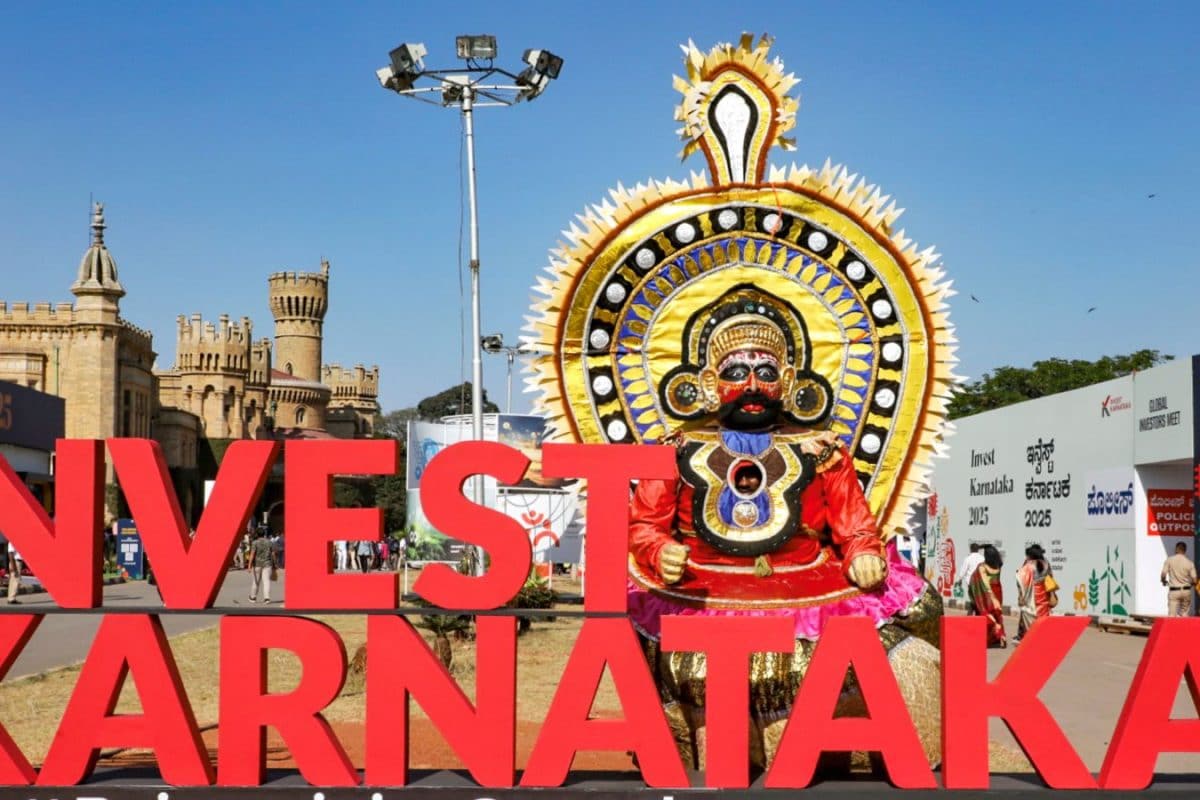Most of Karnataka's chief ministers are from different districts and regions, who saw Bengaluru as a capital where the powerful resided From a sleepy town for retirees, with its salubrious climate, Bengaluru turned its fortunes around within two decades, propelling it to be recognised as India’s Silicon Valley. But this growth seems to have come at a cost — one that the rest of the state and its people have to pay. For Bengaluru to keep growing, the government needs to pump funds into infrastructure, incentivise big players in science and tech to come and invest in the city and do all this while balancing its commitment to the welfare and well-being of everyone living in Karnataka.
But it took just two years for government inefficiency, corruption and political ill-will to show how messy things can be for the citizens if leaders elected from ‘outside’ end up ruling a world-class metropolis that is possibly next only to California in terms of the ambitions and quality of its workforce. Why this apathy? Most of Karnataka’s chief ministers emerge from different districts and regions. They saw Bengaluru as a capital where the powerful resided — just the way the Mughals and perhaps the British treated Delhi.

They did love the city for how beautiful it was, its gardens, gurudwaras, and the winters. But Bengaluru is different. It was always a multi-lingual, multi-ethnic and multi-cultural society that belonged, at the same time, to nobody and everybody.
Trade and commerce existed centuries before the British arrived in the city. For politicians coming from the hinterland, Bengaluru is a good business opportunity for them to try and settle down. They invest in land, and reap the benefits of the kickbacks that they earn by helping businesses establish in the city.
They are in no way incentivised to be loyal to their voters and where they come from — a major reason why Kalyana Karnataka remains so backwards on social and economic indices. Today, because Bengaluru grabs so much attention, the rest of the regions are being ignored. Leaders emerging from Bidar or Bidanur simply do not care about doing anything for their constituents, they lack vision, they lack the commitment and the drive to think of big and bold ideas — something that the younger generation of voters are expecting from their political class.
Bengaluru shares some of the attributes of other very large mega cities in India. So great is the centripetal tendency for events and consequences to converge there that the importance of a resident of Karnataka to the overall ecosystem of the state is inversely proportional to the distance he or she lives from the state capital. And yet, Karnataka, arguably, is the most diverse state in India, a fact that is not so well-appreciated outside the state.
It has many regions, each having a distinct identity of its own as the land, language, culture, food habits, climate and sensibilities are quite different from one another. The Kodavas may just be a few kilometres away from the fertile plains where the Vokkaligas live, but their culture, history, language and habits are different from the agrarian/pastoral communities of the latter community. And what of the Tulus and Konkanis with their vibrantly different and distinctive cultures? Why was the recent movie “Kantara" such a popular hit? People link emotionally with their micro diversities, even as these micro diversities bind 1.
4 billion souls into a unitary civilisation we call Bharat. With this new civilizational consciousness, citizens of this land see no contradiction between the emotional satisfaction in one’s micro identity and the national consciousness in being a Bharatiya. In this non-duality, there is no room for a contrived linguistic identity that was an artificial ploy engineered on us by our erstwhile colonial masters — the British — as they divided Bengal linguistically and fostered linguistic separatism in Madras, more than a century ago.
While Bharat and Bengaluru continue to grow globally, the political class in India continue to find old and new methods to create more divisions within the society. Rich versus poor, men versus women, Hindi versus Kannada, Vokkaligas versus Lingayats, Karnataka versus Tamil Nadu — these divisions are consuming young India’s appetite for aiming for the sky. To be a truly liberal society that respects individual freedoms while maintaining a deep sense of respect for traditional values that define who we are as a civilisation.
It is about time that we overcome these divisions. We need national parties that can think regionally and regional parties that can think nationally. But more than that, we need a rejig in the way in which states are currently organised.
There’s an inherent need for local players to have a bigger say in New Delhi and vice-versa. This is not possible with the current frameworks in place. It wasn’t always like this.
It happened because of the 1956 States Reorganisation when all so-called Kannada-speaking areas were clubbed together. Bits of British India and bits of Nizam and Maharaja (of Mysore) dominions were all put together in a crazy quilt that lacked any one distinguishing character other than language. It took a while for the people and the political class to realise that the aspirations were not going to be met simply by renaming Hyderabad Karnataka as Kalyana Karnataka.
Some regions were supposed to be a natural piece of the puzzle for Karnataka but were left out for the silliest reasons (Kasargod as a case). There was no logical reason to have Ballari be a part of present-day Karnataka, but it was clubbed under it. Similarly, Kadapa, Anantapuram was made to be a part of the newly formed Andhra Pradesh state simply on a linguistic basis which even Ambedkar had his doubts about.
He knew that the idea of dividing states based on language was not a sustainable one, but was perhaps the most practical means of overlooking other fault lines that existed at the time. In summary, present-day Karnataka is a hotchpotch of peripheral regions from erstwhile presidencies of British India and the princely state of Hyderabad, attached to a central core in the south comprising the nine districts of the Mysore kingdom — a remarkable domain, watered by the Kaveri, where traditionalism and modernity were beautifully juxtaposed by enlightened kings and their remarkable diwans. All this was done while Mysore was at the forefront of social reform movements that benefited the backward classes.
This hotchpotch has no real binding identity save for the artificial linguistic construct and with the growing realisation that the time for smaller states has truly arrived we propose a division of Karnataka into seven Kannada-speaking states: Bayaluseeme (Bengaluru, 24,820,811 people in 2011 census), Mysuru (Mysuru, 7,604,108), Karunadu (Belagavi, 20,520,966), Karavali (Karwar, 1,457,169), Malenadu (Shivamogga, 2,890,714), Kodagu (Madikeri, 554,519) and Tulunadu (Mangaluru, 4,657,904). This organic division follows from popular movements that arose because of cultural, historical and linguistic fault lines in these regions. Needless to say, each of these states would be much easier to administer — small is beautiful in the administrative context.
The Kannada people will also have a greater voice in New Delhi if it means having seven new chief ministers (or governors in case we are advocating for the separation of the executive and legislative wings). Culturally, all these places are different from one another. Just dividing Karnataka into two, taking a cue from the division of the erstwhile Andhra Pradesh state won’t help.
Rayalaseema is very different from coastal Andhra for example. This process has to follow the larger pattern of delimitation and state reorganisation where the mistakes made by the SRC in 1956 may be rectified at the earliest, if India needs to develop an outward-looking class of citizens who are ambitious, hungry for more progress and remain united as one, embracing all the micro-diversities this land has been gifted with. Language should be loved, not feared.
Unfortunately today, there is a ‘language economy’ that runs on fear propagated by superficial narratives that one race is superior to another and one language is greater than the other. It is embarrassing, shameful and very antediluvian of us to continue to remain protective of our individual identities at the altar of an artificial construct called language — one of the many ‘gifts’ bestowed upon us by our erstwhile colonial masters. More details are provided in a recent book co-authored by one of us titled ‘Delimitation and States Reorganizations’.
Gautam Desiraju is in IISc, Bangalore and UPES, Dehradun. Sharan Setty is a journalist. Views expressed in the above piece are personal and solely those of the author.
They do not necessarily reflect News18’s views..
Politics

Opinion | Time To Explore The Idea Of Seven Small Kannada-Speaking States?

Most of Karnataka's chief ministers are from different districts and regions, who saw Bengaluru as a capital where the powerful resided














